Sharp LC-70LE741E Review
Sharp LC-70LE741E
A 70in TV for less than £2500 that isn't rubbish? Sharp, we salute you.
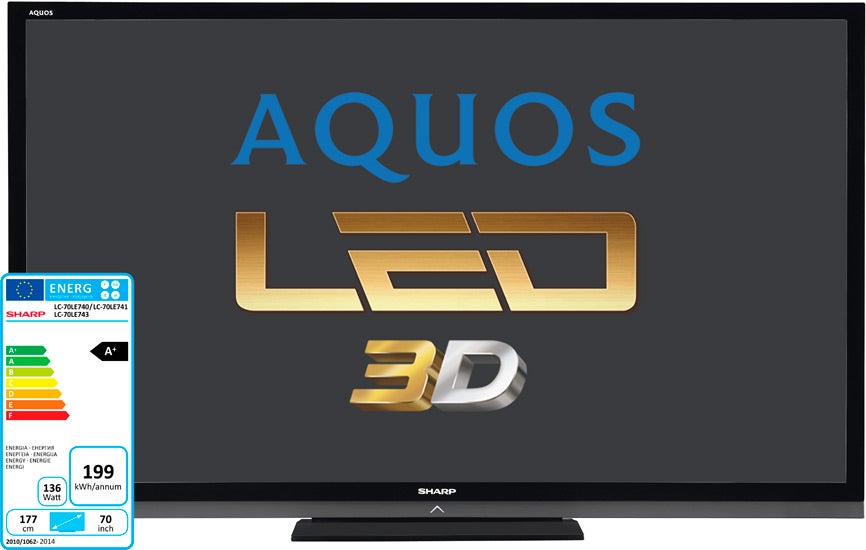
Verdict
Pros
- Superb value
- Good 2D picture quality
- It's a 70in TV
Cons
- Unimpressive online services
- Minor backlight consistency issues with very dark scenes
- Some motion blur
Key Specifications
- Review Price: £2500.00
- 70in LCD TV with edge LED lighting
- active 3D playback
- DLNA and USB multimedia playback
- Very affordable price
- 100Hz
On paper at least, we’re already in love with the Sharp LC70LE741E. Why? Simple: it’s a 70in TV – yes, that’s 70in – that costs just £2,499.99. That’s only £500 more than you’d expect to pay for the ‘measly’ 55in Samsung UE55ES8000 flagship TV, and is actually around £850 less than you’d need to pay for the piffling (though undoubtedly brilliant) 65in Panasonic P65VT50 plasma TV.
In other words, the Sharp LC-70LE741E is the most enticing evidence yet of Sharp’s delightful 2012 policy of shipping massive TVs for small prices. And as dedicated followers of the adage that bigger is always better where TVs are concerned, it’s a policy we want to support whole heartedly. So long, of course, as the TVs have some quality to go with their quantity.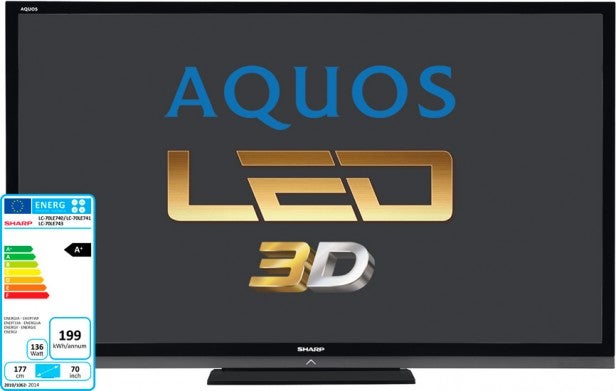
Aesthetically the LC-70LE741E is a mixed bag. From the front we quite like it; yes, its bezel is quite chunky by today’s standards, but its finish is suitably glossy, its corners are smartly angular, and there’s an appealing little angled grey section along the bottom edge offset by an (optionally) illuminated version of Sharp’s ‘mountain top’ logo.
Big trunk
Its rear is much chunkier than that of most TVs we see these days. But we’ve seen plenty of evidence to suggest that bigger rear ends can be helpful in boosting picture quality with LED-lit LCD TVs. Plus, of course, the last time we checked, we tend to look at the front of a TV rather more than its backside.
Connections on the Sharp LC-70LE741E are fairly strong. You get four HDMIs built to the v1.4 spec, as well as three USB ports for recording from the built-in Freeview HD tuner or playing back video, photo and music files from USB storage devices; a LAN port for connecting to DLNA PCs or Sharp’s AquosNet online service; and Wi-Fi via an included USB dongle.
One moan we’d raise at this point is that the TV isn’t as easy to get connected to your PC as it ideally would be. So much so that we can see quite a few people not bothering to follow the process through.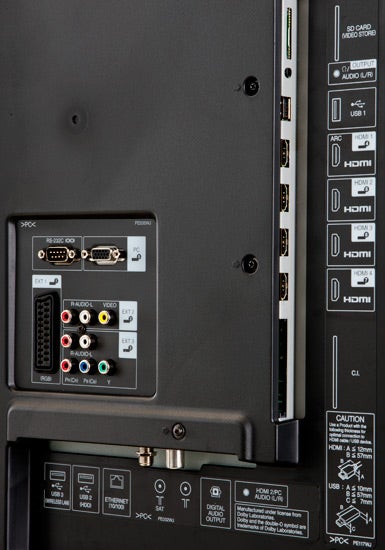
Looking at the technology inside the 70LE741E, we’re slightly concerned to find that it uses edge LED lighting rather than the direct LED lighting found on Sharp’s 8 series TVs. Even on the smaller 60LE636E we tested recently, the use of edge LED lighting led to some pretty severe backlight uniformity problems, where during dark scenes we could clearly see a number of areas of the picture that looked unnaturally brighter than others.
Given that the Sharp LC-70LE741E requires the edge LED lighting to spread a whole 10in further, the worry has to be that the backlight consistency problems will only get worse.
Spec talk
The screen is a full HD affair, and it’s driven by a 100Hz processing engine with an extra, proprietary ‘film dejudder’ element. It also boasts active 3D playback, though no 3D glasses are included; you’ll have to buy those separately, at a cost of around £65 a pair. This is a bit annoying, but not the end of the world given how affordable this giant screen is.
The last things to mention about the 70LE741E’s specification are that it doesn’t use Sharp’s Quattron technology (which adds a yellow subpixel to the usual RGB set up), and that despite its enormous size, it still bags an A for energy efficiency.
We’ve noted in previous Sharp TV reviews that the brand’s AquosNet service is some way off the Smart TV pace being set by its mainstream rivals these days. And sadly this situation is not changed by the Sharp LC-70LE741E.
Accessing its online ‘charms’ via a rather drab and clunky hub menu screen reveals the same disappointing lack of content we’ve noticed before. Notable video sources – the most important part of any smart TV platform in our opinion – are limited to YouTube, iConcerts, Daily Motion, Euronews, HiT Entertainment, Box Office 365, and the Cartoon Network. The last three of which are subscription only. Remarkably Sharp still doesn’t have the BBC iPlayer, never mind other such key services as Netflix and LoveFilm.
Lacking in social skills
Social networkers, meanwhile, have Twitter and Picasa apps, but there’s no Facebook. All in all, AquosNet really is a pretty impoverished effort – especially, ironically, when compared to the actually quite good service Sharp runs on its American TVs.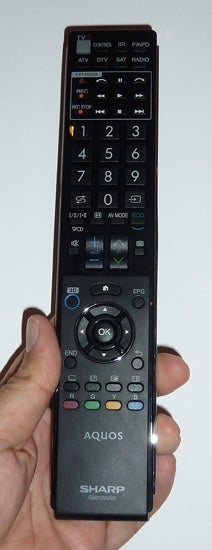
By some happy (and obviously entirely deliberate) accident, our testing of the Sharp LC-70LE741E happened to coincide with the Olympics. Meaning we were able to spend our testing days flicking around 24 channels of HD sporting action scattered across London’s remarkably photogenic venues. And for the most part, we couldn’t have been happier.
Bigger really is better
For starters, there really is no overstating just how much impact HD sporting pictures have when they’re delivered on a 70in screen. They even look much more ‘life-sized’ than they do on Panasonic’s 65VT50, with the extra 5in making a remarkable difference to the extent to which you feel involved in the unfolding action. Plus the screen’s prodigious dimensions ensure that your field of vision is completely taken over, making you forget the rest of the world.
Having such a large screen also rams home the benefits of HD, as the extra inches highlight the detail and sharpness that makes HD a more or less essential accessory for any king-sized TV.
To be clear, we’re not saying that the 70LE741E is feeble when it comes to standard definition. Actually it does a reasonable job of blowing standard def sources up to 70in without exaggerating their inevitable inherent noise. But compared with HD, the amount of softness on show with standard definition becomes tough to live with.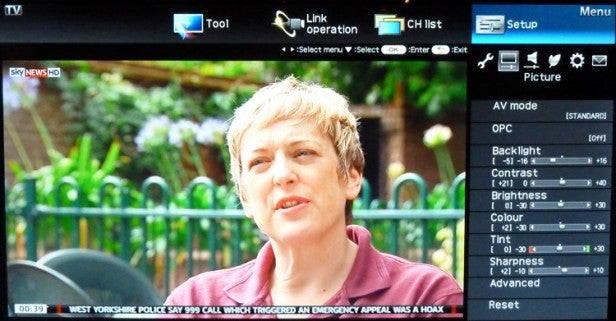
Also hugely appealing about the 70LE741E’s rendering of HD Olympics – and HD footage of all sorts, in fact – is how bright and colourful it makes things look. Any concerns about whether edge LED lighting would be able to still deliver bright, punchy pictures at a 70in size are thoroughly laid to rest, as the 70LE741E’s pictures look quite radiant – even when using a fairly sensibly calibrated suite of picture settings.
Natural colours
We were impressed by how natural colours look too, with skin tones looking believable, and plenty of punch on hand to render the various national outfits, colourful venues and abundance of fancy onscreen graphics that epitomise the Olympic coverage. Reds look a bit over-dominant using the TV’s presets, but there’s a colour management system included within the slightly unwieldy onscreen menus that allows you to calm this problem down.
There isn’t, it must be said, as much exquisite subtlety in the rendering of colour blends as you get with higher-end TVs – the Sharp LC-70LE741E’s colour processing is only 8 bit, after all. But images are sharp and detailed enough to ensure that pictures don’t end up looking cartoony.
Contrast
Although obviously most of the Olympics action takes place in daylight or brightly illuminated arenas, we also felt impressed at this stage by the image’s contrast. Certainly dark corners of indoor arenas appeared to have a pretty nice, deep black tone.
In fact there’s only one major complaint to raise about the 70LE741E’s Olympic performance, and that concerns its motion handling. For the 100Hz engine the TV carries isn’t potent enough to stop the TV from looking a bit blurry when reproducing motion – especially during camera pans. It’s not bad enough to be a deal breaker considering the TV’s affordability, especially as you tend to acclimatise to it over time. But it’s certainly an area of weakness compared with the best efforts this year from some rival LCD brands.
Opting to address our concerns about the Sharp LC-70LE741E’s handling of dark movie footage right at the end, the next source we fed into the set was a selection of 3D material. And sadly the giant screen proved rather disappointing.
On the upside, the huge size of the screen is perfectly suited to 3D, filling your field of vision in just the way we like to make 3D really effective. There’s also a decent amount of detail and depth to 3D images, and they look bright and colourful despite the dimming effect of the active shutter glasses.
Crosstalk spoils the day
However, as with most if not all other 100Hz active 3D TVs we’ve seen, 3D images are pretty much ruined by crosstalk noise. The amount of double ghosting present in almost every 3D frame is hugely distracting, and really takes the edge off the HD detailing noted a moment ago. We also detected some apparent colour errors around the edges of some boldly hued objects in 3D mode – an effect that’s also possibly down to crosstalk of sorts.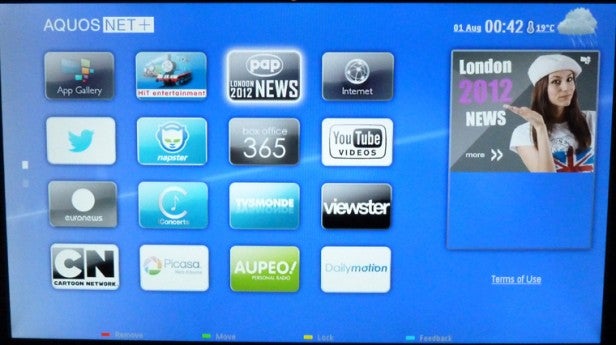
While we guess the 70LE741E’s 3D pictures aren’t so bad as to be called completely unwatchable, they are not exactly enjoyable. So this is not the TV for you if you’re a serious 3D fan.
And so we get to the moment of truth: does the edge LED lighting come a cropper with dark scenes? Thankfully, nowhere near as much as we’d expected. In fact, for most of the time we were very pleased indeed with how well the set handled a selection of contrast-rich movie sequences. Phew.
Good black levels
For starters, the set’s basic black level response is rather good, hitting a depth of blackness that’s both markedly deeper than we’d expected and beyond what many of its rivals can manage. With the backlight set to around its -5 level (using a peculiar scale of -16 to 16), blacks genuinely look black, with only a hint of the grey ‘wash’ so common on LCD TVs.
What makes this achievement particularly impressive is the fact that the set still manages to retain a really good amount of shadow detail in dark areas, as well as leaving bright parts of predominantly dark pictures looking decently punchy. And then, of course, there’s the all-important fact that despite this tricky combination of deep blacks and bold colours, backlight inconsistencies really aren’t bad at all.
Good cloud control
In fact, with the backlight set as noted earlier, we only became aware of greyish ‘clouds’ during exceptionally dark shots, such as where the film title moves towards the screen at the start of Harry Potter: The Deathly Hollows Pt 2, and the horrendously difficult to reproduce shot at the start of Chapter 12 of the Harry Potter Blu-ray, where Voldemort’s army amasses on the hill above Hogwarts. And even when the inconsistency clouds do appear, they’re not as glaringly obvious as they can be on many rival edge LCD TVs – including Sharp’s own 60LE636.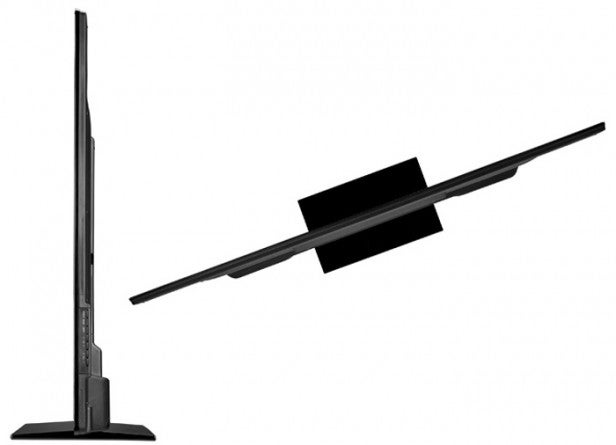
The bottom line is that the very flawed ‘serious movie viewing’ experience of the 60LE636 is here replaced by an extremely enjoyable one. A fact which is enough in itself, surely, to commend the Sharp LC-70LE741E to an awful lot of cash-strapped big-screen home cinema fans. Especially as we didn’t feel as troubled by the motion blurring mentioned earlier when watching high-quality Blu-rays.
Gaming glory
The motion blur proved surprisingly untroubling while gaming on the 70LE741E too, and we were relieved to find the screen turning in a very respectable input lag figure of just 35ms – low enough to leave your ‘twitch’ gaming skills pretty much unaffected. In fact, let’s make no bones about this: gaming on the 70LE741E is spectacularly fun, immersing you in the action in a way no smaller screen can. It even potentially gives you a small advantage in games where seeing small movements in the distance is important.
The Sharp LC-70LE741E manages to accompany its engagingly cinematic pictures with a respectable audio performance, which boasts more volume, dynamic range and clarity under pressure than you get with the vast majority of its smaller, slimmer rivals.
Verdict
There are certainly areas Sharp could improve on with the 70LE741E. Its operating system is fiddly, its online services are too limited, and its motion handling is a little off the pace. We were also disappointed by its crosstalk-riddled 3D.
Despite all this, though, we had a hugely fun time with Sharp’s giant set. It’s comfortably good enough to make the vast majority of what we watched on it much more enjoyable than it would have looked on anything smaller – an impressive achievement indeed when you consider that all 70in of the 70LE741E can be yours for under £2,500.
How we test televisions
We test every TV we review thoroughly over an extended period of time. We use industry standard tests to compare features properly. We’ll always tell you what we find. We never, ever, accept money to review a product.
Trusted Score
Score in detail
-
Features 7
-
3D Quality 6
-
Value 9
-
Design 7
-
2D Quality 8
-
Sound Quality 8
Features
| Size (Inch) | 70in |
| Display Type | LED |
| Max. Resolution | 1920 x 1080 |
| Full HD 1080p | Yes |
| Digital Tuner | Yes |
| Freeview HD | Yes |
| 3D Ready | Yes |
| Refresh Rate (Hertz) | 100Hz |
Connectivity
| HDMI | 4 |
| Component | 1 |
| Composite | 1 |
| Scart | 1 (RGB) |
| Digital Audio Out | Yes (optical) |
| Headphone | 1 |
| Charging/Computer Connection | 3 |
| Ethernet | 1 |
| WiFi | Yes (via included dongle) |
Physical Specifications
| Height (Millimeter) | 975mm |
| Width (Millimeter) | 1613mm |
| Depth (Millimeter) | 89mm |
| Weight (Gram) | 40.5g |

